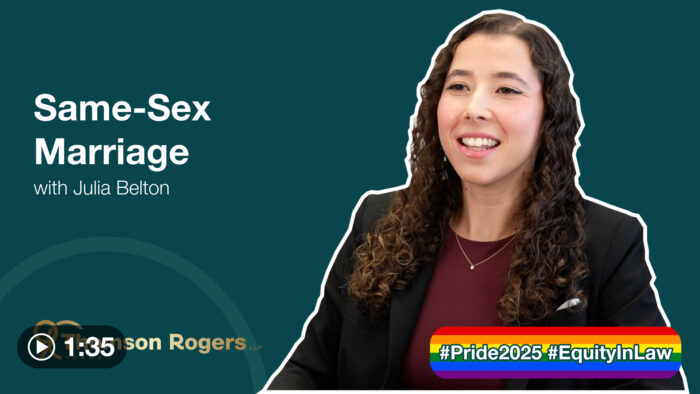Punitives and the Jury
Author(s): Darcy R. Merkur, Stacey L. Stevens*
April 1, 2009
Canadian courts have steadfastly remained within the boundaries of rationality and proportionality since the 2002 Whiten1 decision, where the Supreme Court of Canada restored a jury’s $1,000,000 punitive damage award against Pilot Insurance Company for its misconduct in handling a fire loss claim.
As can be seen in the decisions that have followed Whiten, the principles that punitive damage awards are an exception rather than a rule and are to be imposed only if there has been high-handed, malicious, arbitrary or highly reprehensible misconduct that departs, to a marked degree from ordinary standards of decent behaviour2 , are firmly entrenched in our civil jury system.
The Jury’s Role and Limitations
When charged with the opportunity to turn moral judgment against a defendant into monetary compensation, juries are guided by some key factors.
DEGREE OF MISCONDUCT
The Supreme Court of Canada made it clear that where punitive damages are awarded, the quantum of the award is to be assessed in an amount that is reasonably proportionate to such factors as the harm caused, the degree of the misconduct, the relative vulnerability of the plaintiff and any advantage or profit gained by the defendant. In Whiten, Pilot Insurance Company earned the distinction of being the “insurer from hell“3 after pursuing a course of conduct deliberately designed to force Daphne Whiten, a financially-vulnerable plaintiff, into making an unfair settlement of her property damage claim.
Shortly before the Supreme Court of Canada released the Whiten decision, the Court of Appeal was faced with its second decision involving insurer misconduct and the question of a punitive damage award. In Khazzaka v. CGU Insurance Company of Canada4, Mr. Khazzaka’s auto repair shop was destroyed by fire. The Fire Marshall and OPP concluded the fire was accidental. CGU’s adjuster and expert fire investigator ignored this evidence and concluded the fire was arson. Ultimately, the jury rejected the testimony of CGU’s experts and found that there was sufficient evidence to conclude both its adjuster and fire investigator acted unreasonably in their investigation from the outset.
The Court of Appeal subsequently upheld the jury’s punitive damage award of $200,000. In doing so, the court recognized two significant points. Firstly, unfairness compounded over and over again may equal conduct that merits the condemnation of the court when visited by an insurer that owes a duty of good faith5. Secondly, while an insurer maintains a right to conduct its own independent investigation, the insurer crosses the line and enters the realm of acting unfairly when it maintains a position of denial when there is no credible evidence to support doing so. The court’s refusal to allow CGU to hide behind the opinions of its third party experts in order to avoid a punitive damage award6 represents the court’s disdain for an insurer that was not deterred by the $1 million punitive damage award in Whiten.
The most significant post-Whiten punitive damage award reached the Court of Appeal in 2006. In Pereira v. Hamilton Township Farmers’ Mutual Fire Insurance Company7, another fire loss case, the jury awarded punitive damages in the amount of $2.5 million. Farmers’ Mutual investigated the claim and concluded the fire had been deliberately set despite the fact there was no evidence to support the allegation the plaintiffs were experiencing any financial difficulty or that they had misrepresented facts to its adjuster when the policy was renewed. At the end of the trial, the jury concluded Farmers’ Mutual prejudged the merits of the plaintiffs’ claims, conducted a biased investigation and relied on the groundless defences of arson and misrepresentation to deny the claim.
Mr. Justice Borins, on behalf of the appellate court, followed the test set out in Whiten but found the quantum of the award to be “grossly excessive” and “irrational“8. He interpreted the award in Whiten as being at the “upper end of the permissible range” and, as such, without evidence of misconduct similar to that of Pilot Insurance Company, Borins, JA. set aside the $2.5 million punitive damage award9.
Importantly, it should be noted that although the Supreme Court of Canada specifically disagreed with counsel providing jurors with a range of punitive damage awards, Borins, JA. strongly recommend one be provided in order to ensure that any award falls within established legal principles and avoids further intervention by the court.
MISCONDUCT UNPUNISHED
A further factor in place to limit punitive damages is the extent of any other fines or penalties levied by the defendant as a result of its actions10. In general, a punitive damage award creates a risk of punishing a defendant twice for the same action11. Nevertheless, the court has concluded that even though the defendant is already subject to other fines or penalties, this is not an absolute bar especially when the adequacy of the already-imposed punishment does not accomplish the objectives of retribution, deterrence and denunciation12. This principle distinguishes the objective of punishing a defendant rather than rewarding a plaintiff, while at the same time serves as a reminder that punitive damage awards walk a fine line between the criminal law and civil law.
A recent example of the impact other punishment, or lack thereof, can have on a punitive damage award in a civil action can be found in McIntyre v. Grigg et al13. Here, the Court of Appeal upheld a $100,000 punitive damage award in an action arising out of a motor vehicle collision. Andrew Grigg was intoxicated when his car struck Andrea McIntyre, a pedestrian. In the criminal proceeding, Mr. Grigg entered a guilty plea to careless driving and was fined $500.00.
In upholding the punitive damage award, the court rejected the defendant’s argument that Mr. Grigg’s conduct was no more than a motor vehicle accident resulting from excessive consumption of alcohol. The court found that drinking and driving was a “social evil“14 that cried out for deterrence. Additionally, it considered Mr. Grigg’s decision to drink excessively and drive to be deliberate and intentional, demonstrating a “conscious and reckless disregard for the lives and safety of others“15.
Persuading the Jury
The above cases reinforce the fact that little is known about what type of evidence is required to persuade a jury to award punitive damages. While it is critical from the outset of any case to develop an appropriate theme, this is even more important when the defendant’s negligent acts may give rise to a punitive damage award. Keeping in mind a punitive damage award represents the translation of an emotional response into a dollar amount, the theme should be designed to trigger a sense of indignation and outrage in the jury.
Perhaps the easiest way to establish the common theme of ‘corporate misconduct’ in punitive damages cases is to contrast the actual corporate conduct in the specific case with the corporation’s own standards. Most corporate representatives will welcome the opportunity to boast about their corporation’s noble goals, usually well summarized on their website, of “safety first” or “the customer comes first” while neglecting to emphasize the understandable balance between these goals and corporate economic viability.
An example of how a jury responded to such a theme with punitive damages is found in Resch v. Canadian Tire et al16. In Resch a teenage boy was seriously injured after his bicycle collapsed. His bicycle had been subject to a recall but the timing and the wording of the recall were questioned by plaintiffs’ counsel. In awarding $160,000 in punitive damages against the retailer, Canadian Tire Corporation Ltd., the jury stated their reasons as follows: “Canadian Tire Corporation’s failure to practice their stated policy of Safety Above All is inconsistent with their lack of directive and its accompanying procedures mandating the immediate and direct communication between Canadian Tire Corporation and their Franchisees regarding any and all matters related to safety.” The wording may be awkward, but it appears that the jury was unconvinced that Canadian Tire Corporation abided by its stated “safety first” policy in the handling of the recall. Accordingly, the jury elected to punish Canadian Tire’s conduct.
Developing and presenting the right evidence is just as important as identifying the appropriate theme. Recent U.S. studies confirm that jurors may be influenced by party identification. Methods of identification include looking for shared personal characteristics with the plaintiff, and the jurors’ knowledge of the defendant’s reputation. As a result jurors may see the parties as the “have-nots versus the haves”, may develop an anti-defendant bias, or may see the plaintiff as an innocent victim whose fate has been determined by a faceless corporation. Further, these studies have shown that jurors tend to rely on hindsight bias when judging what a defendant could have and should have been able to foresee in taking the action that ultimately resulted in the harm done to the plaintiff17. Accordingly, the type of evidence gathered during investigation and discovery should focus on18:
- Whether the conduct was planned and deliberate.
- The intent and motive of the defendant.
- Whether the defendant persisted in the outrageous conduct over a lengthy period of time.
- Whether the defendant attempted to conceal or cover up its conduct.
- The defendant’s awareness that what it was doing was wrong.
- Whether the defendant profited from its misconduct.
- Whether the interest violated was known to be deeply personal to the plaintiff.
- The financial or other vulnerability of the plaintiff.
Conclusion
The court’s comments in Khazzaka and the jury’s assessment of punitive damages in Pereira appear to cast doubt over the Supreme Court’s opinion that “judges and juries in our system have usually found that moderate awards of punitive damages, which inevitably carry a stigma in the broader community, are generally sufficient“. These decisions give rise to questioning the true impact that a “moderate award” of punitive damages will have on the way that insurers might assess and investigate meritorious claims. Nevertheless, while punitive damage awards are a part of our civil jury system, it is apparent the court remains steadfast in its role of gatekeeper in preventing the “Americanization” of our civil jury system.
Darcy Merkur and Stacey L. Stevens are Members of OTLA and practice withThomson Rogers in Toronto, ON.
NOTES
1 Whiten v. Pilot Insurance Company [2002] 1 S.C.R. 595, 2002 SCC 18.
2 Ibid.
3 Ibid at para 159.
4 Khazzaka v. CGU Insurance Company of Canada 2002 CanLlI 45018 (ON c.A.).
5 Ibid at para 14.
6 Jbid at paras 15 and 19.
7 Pereira v. Hamilton Township Farmers’ Mutual Fire Insurance Company and between Hamilton Township Farmers’ Mutual Fire Insurance Company v. Pereira and Mazza et al2006 Can LlI 12284 (ON c.A.).
8 Ibid at para 111.
9 Ibid at paras 111 to 113. A key distinction between Farmers’ and Pilot’s conduct was that Farmers’ did not shop for a willing expert or ignore independent conclusions during its investigation.
10 Supra at note 1.
11 Fluery v. Fluery, 2001 CanLII 294 (ON c.A.) at para 11.
12 Supra at note 1 at para 123.
13 McIntyre v. Grigg et al, 2006 CanLII 37326 (ON c.A.) .
14 Ibid at para 72.
15 Ibid at para 75.
16 See Resch v. Canadian Tire et al, 2006 CanLlI 24128 (ON. S.c.) for the decision on costs. Craig Brown and the co-author, Darcy Merkur, were counsel at trial and can be contacted for a copy of the jury questions and answers.
17 C.R. Sustein, R. Hastie, ].w. Payne, D.A. Schkade, W.K. Viscusi, “Punitive Damages How Juries Decide” (Chicago: The University of Chicago Press, 2002).
18 Supra at note 1.
Share this






